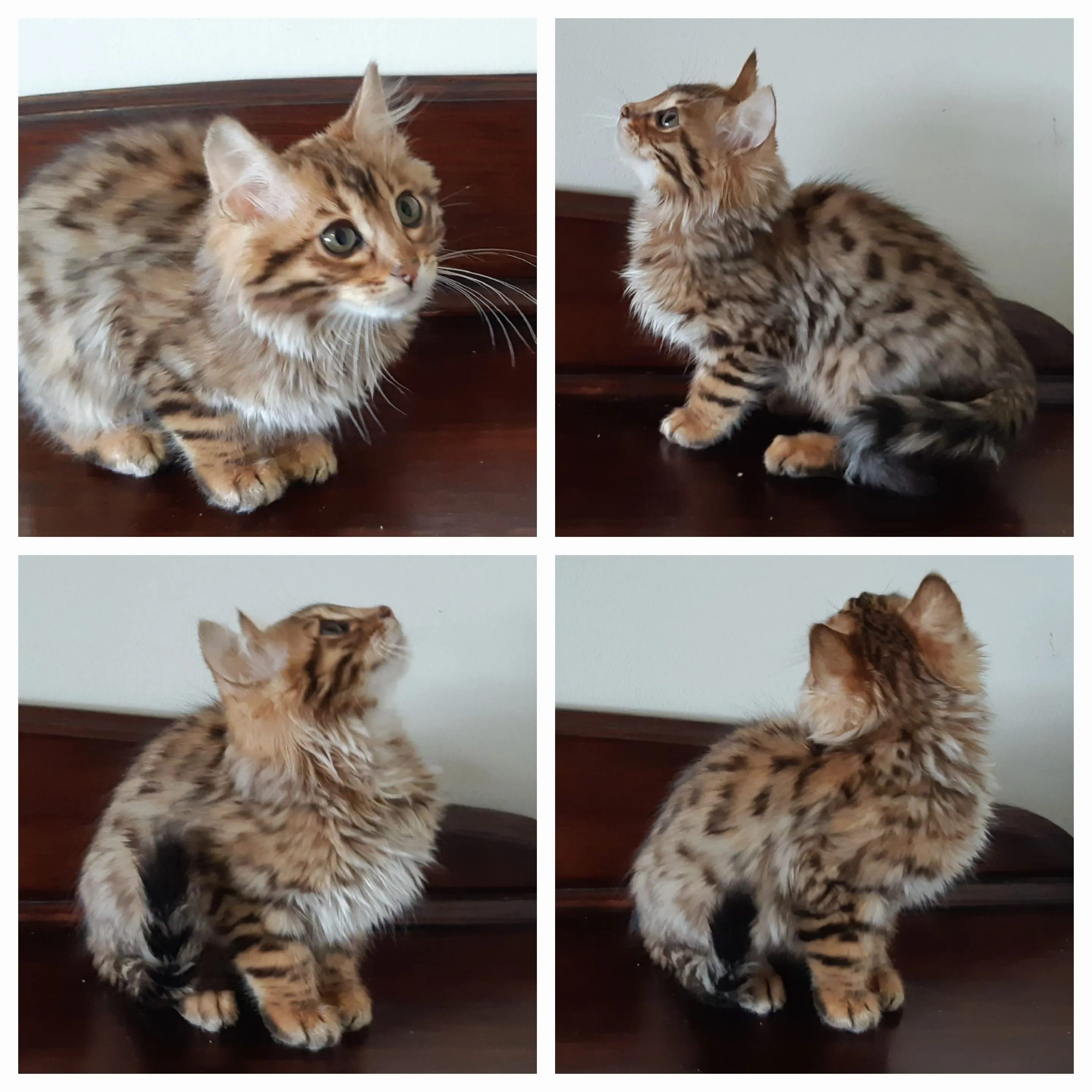Longhair Bengal cats, also known as Cashmere Bengals, are captivating semi-longhaired variants of the popular Bengal breed. These stunning felines combine the wild, leopard-like patterns of their Asian Leopard Cat ancestors with a luxurious flowing coat. For Australian breeders and enthusiasts, the arrival of recessive longhair genes has been a game-changer, introducing new bloodlines since 2009. If you’re passionate about rare cat breeds, exploring all kinds of cats can provide deeper insights into these unique hybrids.
Breeding Longhair Bengals requires a solid understanding of genetics, as the longhair trait is recessive (often denoted as M4). It only appears when a kitten inherits the gene from both parents. In Australia, the journey began with imports carrying this hidden trait, unknowingly passing it through generations.
History of Longhair Genes in Australia
Experienced breeders like those at Adelhills Bengals have tracked these lines meticulously since 2009. The first known carrier was Magesticpride Golden Formula, imported from Canada in 2010. Unbeknownst to the breeder, this shorthair Bengal carried the longhair gene, producing kittens with a 50% chance of being carriers (N/M4). One offspring, BDGCH Adelhills Golden Light, continued this lineage.
In 2013, Afrikatte Sansas Flame arrived from Europe via sire Zawadi Max-FX, introducing another M4 line. This bloodline persists in queens like Adelhills Pop Culture. That same year, another breeder imported Rainforest Taro Hunter from the USA (DOB: August 19, 2012), who produced visible longhair (Cashmere) kittens by 2018. This influences modern queens such as Adelhills Jungle Prisms.
A fourth line traces to Icene Wolverine, potentially from Swedish import Kungsgardencats Lone Wolf or U.S. lines via Bundu Cassanova’s parents, Anjali Charlie and Junglewhisper Namaqua. Without DNA testing on Wolverine’s parents, the exact origin remains speculative. Descendants like Metanoia Tank keep this gene active.
By 2023, new breeders invested in unrelated overseas imports, expanding the pool. As of 2025, fresh longhair Bengal lines continue to bolster the breed’s development Down Under. This genetic diversity enhances coat quality, personality, and show potential, drawing from global pedigrees vetted by organizations like TICA.
 Cashmere Bengal kitten collage showing luxurious longhair coats
Cashmere Bengal kitten collage showing luxurious longhair coats
Cashmere Coat: Luxurious Yet Low-Allergen
The hallmark of Longhair Bengals is their semi-longhair coat, termed “Cashmere” for its Angora-like softness and silkiness. Unlike full longhairs like Persians, Cashmeres retain the Bengal’s allergy-friendly profile. The low Fel d 1 allergen levels, inherited from wild ancestors, make them tolerable for many cat-allergic owners—vital for breeders with sensitive households.
Personal experience underscores this: many Bengal fans, including those with allergies, rediscover longhairs through Cashmeres. However, maintenance is key. Weekly brushing prevents matting, especially around sanitary areas, underarms, and britches. Seasonal shedding is more noticeable due to length, so expect extra grooming compared to shorthairs.
For low-maintenance preferences, shorthair Bengals remain ideal. Cashmeres demand commitment for that flowing, glittery coat with horizontal pattern flow. Texture mimics premium cashmere fabric, enhancing their exotic appeal.
If you’re researching unique felines, check out the most rare cat breeds for comparisons.
Breed Recognition and Standards
Longhair Bengals enjoy recognition in the USA (TICA since 2017), Canada, Europe, New Zealand (as Cashmere since 2013), and CFA (2018, with AOV coat). Australia lags but progress is underway. A 2018 CCCA application via FASA failed prematurely, but a 2024 NSWCFA submission was approved. ACF-affiliated breeders, including Adelhills, submitted via GCCFSA in 2025 for 2026 national listing, building on their successful Blue Bengal approval.
TICA’s standard emphasizes:
- Coat Length: Medium to long, close-lying with furnishings (shorter OK in kittens).
- Tail: Medium, thick, tapered, voluminous hair (shorter in kittens).
- Legs: Medium length, britches medium-short, toe hair acceptable.
- Head: Broad modified wedge, rounded, with feathering for roundness.
- Ears: Medium-small, side-set, rounded, with possible lynx tipping.
CFA’s AOV adds: Semi-longhaired, fine/luxurious (not wooly), silky/satin desirable, pattern visible, no excessive ruff or tufts, plumed tail.
These standards ensure Longhair Bengals stand out in shows while preserving Bengal traits like alertness and athleticism.
Future Outlook for Australian Longhair Bengals
Australia’s Longhair Bengal scene is thriving with diverse genetics, committed breeders, and pending recognition. From hidden recessive carriers to luxurious Cashmere coats, these cats offer wild beauty with domestic charm. Prioritize DNA testing for ethical breeding, regular grooming, and veterinary checks to support health.
Consult feline geneticists or vets experienced in Bengals for personalized advice. Ready to explore more? Dive into names for hairless cats for creative inspiration, or follow local breeders for kittens.
References
- TICA Bengal Longhair (BGL) Breed Standard, 2017.
- CFA Bengal AOV Coat Standard, 2018.
- Breeder pedigrees from Adelhills Bengals and affiliates (2009-2025).
